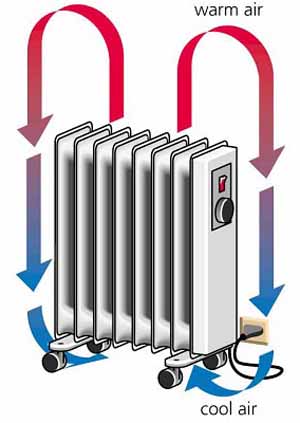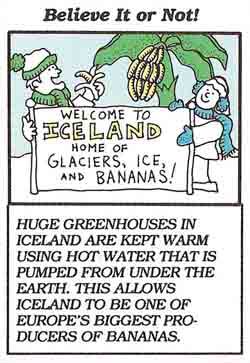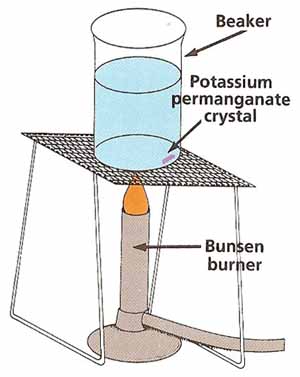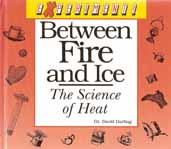BETWEEN FIRE AND ICE: The Science of Heat - 5. Convection's Ups and Down

Figure 1. Convection currents in the atmosphere.
If you hold your hand over a hot radiator, you can feel warmth on your skin. In the previous chapter, though, we said that air is a poor conductor. So, how can heat from the radiator travel through the air to warm your hand? The answer is that the heat does not travel by conduction, but by a different process called CONVECTION.
 |
The air molecules that collide with a radiator pick up heat energy from the hot metal. This makes the air molecules move faster and farther apart. Since the warm air sound the radiator is now lighter, it rises. Cooler air from other parts of the room moves in to take its place. As the warm air rises, it loses heat energy, becomes heavier, and falls again. Eventually, it returns to the radiator to be heated once more.

Rising RiceYou will need:
What to do:
Only attempt this experiment with adult help. Ask the adult to partly fill the pan with cold water and to place it on a stove to heat. As the water begins to warm up, ask the adult to sprinkle some grains of rice in the water at the edge of the pan. From a safe distance of several feet, watch what happens. How does the rice move? Try to explain what you see. What happens to the rice as the pan is allowed to cool?
Taking it further:
In a school laboratory, this experiment can be done in a different way by using a crystal of the purple chemical, potassium permanganate. Partly fill a beaker with cold water. With tweezers, carefully place a crystal of potassium permanganate at the bottom of the beaker near to one side. The teacher will then put the beaker on a stand and light a Bunsen burner while you stand at a safe distance. Watch what happens as the teacher heats the beaker just below the crystal. Try to explain what you observe.
Warning: You must have adult help with these experiments. Potassium permanganate is poisonous if swallowed. It will stain clothing when dissolved. |
Convection Currents
Convection can happen in both liquids and gases, but not in solids. Can you think why?
In conduction, heat flows directly from a hot object to a cold one. In convection, however, heat is moved around by a current of liquid or gas.

How a Room Warms UpYou will need:
What to do:
The room should be cool to begin with, about 60°F (16°C). Place the thermometers in various parts of the room: high up, low down, near the radiator, and far away from it. Draw a plan of the room, showing the locations of the thermometers. Record their temperatures. Turn on the radiator and start the stopwatch. Every 10 minutes record the temperatures shown on all the thermometers. Do this for a period of about 2 hours. Draw graphs to show how the readings on each thermometer with time. Which parts of the room heated up fastest? Was the temperature of the room fairly even at the end of the experiment? Are the results as you expected? |
The Weather Machine
On a warm day the Sun heats up the land, which in turn heats the air above it. The warm air rises, allowing cooler, heavier air to move in and take its place (see Figure 1).
On a large scale, this process gives rise to winds around the world. Warm tropical air rises to a height of several miles and moves off in the direction of the poles. Cold air over the poles sinks and moves toward the tropics. In between, there are regions of rising and sinking air. These circulating patterns occur all the time. The wind and weather at any place on Earth, however, may vary a great deal from day to day. This is because the circulation of air is affected by many different factors, including the Earth's spin, obstructions such as mountains, and seasonal changes in the Sun's heating.
 |


